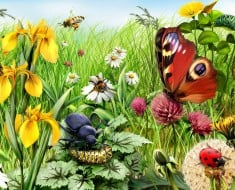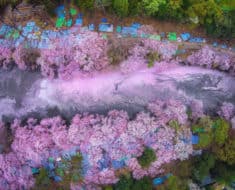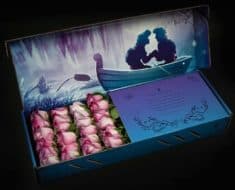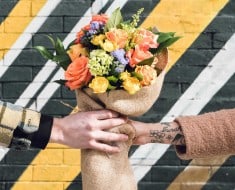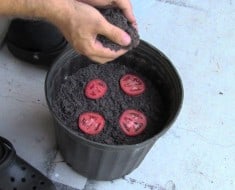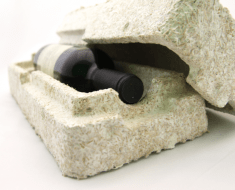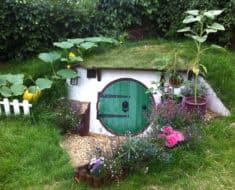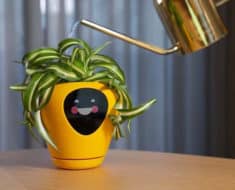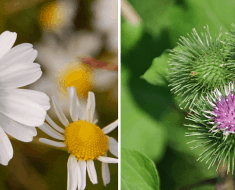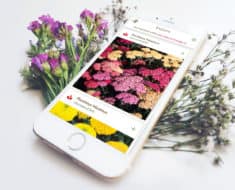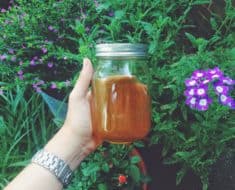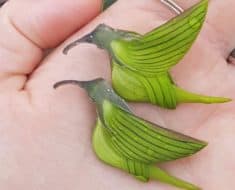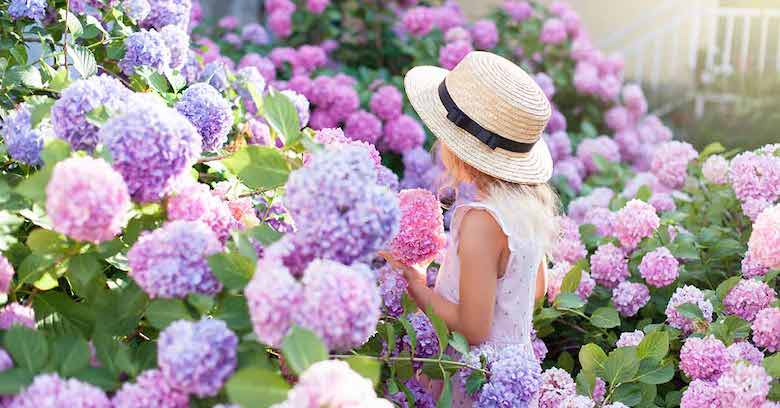
Gardentech
Step into the enchanting world of flora, where delicate petals and vibrant hues entwine to captivate our senses. Amidst this floral symphony, one species stands out, adorned with timeless elegance and an enigmatic allure. Behold the extraordinary hydrangeas as they grace gardens and landscapes with their fascinating secrets. As we embark on a journey of discovery, prepare to be astonished by the lesser-known wonders concealed within the petals of these enchanting blooms. Unveiling their hidden stories, we delve into hydrangeas, unraveling remarkable facts that will leave you in awe and deepen your appreciation for these botanical treasures.
Hydrangeas are a mainstay of British gardens and a hardy plant that grows in Zones 3–7. They come in various colors of pink, blue, and purple, as well as creamy white and rustic green, and produce huge, beautiful flowerheads made of clusters of tiny blooms. They are extremely well-liked as cut flowers because of their adaptability and striking, appealing look.
Hydrangeas are simple to grow, adapt to practically any soil, and have a lot of flowers. While they were initially grown in Japan, fossils from 40 to 65 million years ago have been found in North America. They didn’t arrive in Europe until 1736 when an English colonist introduced a variety from North America. With a long history, they are now a common sight in yards and bouquets.
When it comes to Hydrangeas, there is so much to talk about and that is what we will do in this article. Keep reading to uncover interesting facts that you will be thrilled to know.
Native Origin
The native origin of hydrangeas can be traced back to diverse regions across the globe, each contributing its own unique species to the rich tapestry of this beloved flowering plant. Primarily hailing from East Asia, particularly Japan, China, and Korea, hydrangeas have flourished for centuries in these lands of ancient beauty and cultural heritage. These regions’ lush mountains and temperate forests have provided the perfect nurturing environment for these captivating blooms to thrive.
Hydrangeas, known as “ajisai,” have long been cherished and celebrated in Japan. They hold a special place in Japanese culture, often symbolizing heartfelt emotions and grace. Ajisai festivals, held during the rainy season, pay homage to the beauty of these flowers, transforming gardens into magnificent displays of color and elegance. Across the ocean, in the Americas, hydrangeas found their way to the shores of North and South America through explorers and botanists.
While not native to these lands, they have been embraced by horticulturists and gardening enthusiasts, who have cultivated and adapted them to suit local climates and landscapes.
Today, hydrangeas bloom in many hues and varieties in gardens, from the coastal regions of the United States to the vibrant landscapes of Chile.
Meaning Of The Name
The Greek words “hydro” and “angos,” which translate to “water vessel,” are the origin of the term “hydrangea.” That is appropriate because hydrangeas are well-known decorative plants and adore water. They have been used in traditional medicine for ages and are also said to have therapeutic qualities.
We advise placing hydrangeas in the water immediately if you receive a bouquet to make them look their best. Also, top off the water more frequently and replace it entirely after a few days. This will enable these lovely blossoms to linger longer.
As a result of the acidity of the soil they are grown in, hydrangeas are renowned for changing color. They can become blue or pink when lime or aluminum sulfate is added to the soil. This bloom belongs in every garden.
What Do They Symbolize?
Hydrangeas symbolize various meanings and emotions, varying significance across different cultures and contexts.
Here are a few common interpretations associated with these captivating blooms:
- Gratitude and Thankfulness: In many cultures, hydrangeas are considered symbols of gratitude, appreciation, and thankfulness. They are often given as gifts to express heartfelt gratitude to someone for their kindness, support, or generosity.
- Understanding and Harmonious Relationships: Hydrangeas are also associated with understanding, harmony, and empathizing with others. They represent the importance of open communication and the willingness to listen and comprehend different perspectives, fostering harmonious relationships.
- Heartfelt Emotions: With their lush and delicate petals, hydrangeas are often seen as flowers that embody deep emotions and sentiments. They can symbolize genuine emotions such as love, compassion, and sincerity, making them popular for expressing affection.
- Beauty and Abundance: Hydrangeas’ abundant and lavish blooms are often seen as symbols of beauty, opulence, and abundance. Their vibrant colors and lush clusters evoke a sense of richness and prosperity, making them a delightful addition to gardens and floral arrangements.
- Spiritual Enlightenment: In some spiritual beliefs, hydrangeas are associated with spiritual growth, enlightenment, and the quest for deeper understanding. They are seen as flowers that invite contemplation, self-reflection, and the exploration of inner wisdom.
It’s important to note that the symbolism of flowers can vary across cultures and personal interpretations. While these meanings are commonly attributed to hydrangeas, individual perspectives, and cultural nuances may add additional layers of symbolism to these remarkable blooms.
Color Symbols
The symbolic interpretations of hydrangea colors can vary across cultures and personal perspectives. Additionally, hydrangeas can exhibit a range of colors within a single bloom or change colors based on soil pH, further adding to the complexity and diversity of their symbolism.
Here are the symbolic associations commonly attributed to different hydrangea colors:
- Blue hydrangeas usually symbolize a sense of peace and evoke feelings of relaxation and harmony. Blue hydrangeas are also linked to deep emotions, expressing a sense of understanding and heartfelt sincerity.
- Pink hydrangeas are symbols of love, romance, and femininity. They convey gentleness, grace, and affectionate emotions. Pink hydrangeas are often given as tokens of admiration and appreciation or as expressions of love and friendship.
- White hydrangeas are often associated with purity, innocence, and spirituality. They represent elegance and grace and are often used in weddings and religious ceremonies. White hydrangeas can also symbolize new beginnings and convey a sense of reverence and purity of heart.
- Purple hydrangeas are often seen as enchantment, whimsy, and magical allure symbols. They convey a sense of mystery, creativity, and individuality. Purple hydrangeas can also represent pride, admiration, and accomplishment.
- Green hydrangeas are unique and less common, symbolizing renewal, freshness, and vitality. They embody nature’s rejuvenating energy and convey a sense of growth, hope, and resilience. Green hydrangeas can also symbolize abundance and prosperity.
Shelf Life
Hydrangea will last up to 10 days in a vase with regular watering. Cut stems at an angle to prolong life and remove leaves that soak in water. Also, keep it out of direct sunlight and in a cool place for a long time, with a little more effort, dried hydrangeas last longer. Dried hydrangea can be used for various purposes, such as wreaths, bouquets, and decorations. It is important to keep it out of direct sunlight and apply hairspray or clear acrylic spray to keep it in shape for one year, or it will last two years.
The easiest way to keep beautiful hydrangeas in your home is to use acrylic spray. Hold the can about 30 cm away from the flowers and brush lightly. Be careful not to oversaturate it.
Let the flowers dry completely before placing them in a vase or using them in a flower arrangement. Be careful not to overspray, as this may cause the flowers to discolor or wilt.
Keep It Away From Your Pets
Hydrangeas are not great for pets as they contain cyanogenic glycosides that can cause vomiting, diarrhea, and lethargy. All parts of the plant contain amygdalin, which is toxic and can cause breathing difficulties, vomiting, and seizures. It is important to keep these flowers out of pets’ reach and consult a veterinarian immediately if ingestion is suspected. While this is unlikely to be fatal, it can cause discomfort and an upset stomach.
Common swallowing symptoms include vomiting, diarrhea, and lethargy. If your pet ingests a toxic substance, it’s best to stay safe and consult your veterinarian. Not all flowers contain amygdalin, so it’s worth researching before introducing a new plant into your home. If you suspect your pet has ingested poisonous flowers, seek immediate medical attention.
You Can Celebrate Hydrangea Day
Hydrangea Day is January 5, but out-of-season flowers bloom. Known for its large, showy flowers in various colors, it is often used at weddings and other special occasions. However, it can be enjoyed at any time of the year and changes color depending on the acidity of the soil in which it is planted. Hydrangea is a popular choice for gardeners experimenting with different shades. People worldwide have proclaimed January 5 as “World Hydrangea Day” to celebrate the presence of hydrangeas in the season when the flowers do not bloom. Hydrangeas change color depending on the soil pH in which they are planted, making them a unique and interesting addition to any garden. They have also been used for medicinal purposes in traditional Chinese medicine for centuries.
Blooming Times
Hydrangea sprouts in early summer and blooms in the spring, summer, and early fall of the following year. In hot climates, hydrangeas will die off in the heat of summer but will bloom again in the fall. Different types of hydrangeas have different flowering habits and requirements. Knowing the flowering habits of a particular hydrangea variety can help ensure successful flowering. Panicle hydrangeas are hardy plants that grow up to 3 meters tall and require regular watering and pruning. It blooms only once a year, but some re-flowering cultivars produce a second bloom later in the season on new stems. Regular hydrangea blooms once a season, but re-flowering cultivars produce their second bloom on new stems later in the season.
Hydrangeas In Weddings
Hydrangeas have emerged as beloved blooms in weddings, lending their ethereal charm and enchanting beauty to create unforgettable moments. As brides glide down the aisle, they clutch exquisite bouquets with voluminous hydrangea blossoms. These meticulously crafted floral arrangements with delicate petals add a touch of elegance and a whisper of romance to the bride’s ensemble, enhancing her radiant presence on this special day. But the allure of hydrangeas extends beyond the bride’s bouquet. These versatile flowers gracefully adorn tables as captivating centerpieces, breathing life into the reception decor.
If you want Hydrangeas to be part of your wedding, you can order hydrangea bouquets for your wedding through flower delivery boston and get them fresh on your special day.
Whether arranged in vintage vases or nestled among complementary blooms, hydrangeas contribute a sense of opulence, transforming wedding venues into enchanted realms where love and celebration intertwine. As guests gather to witness the exchange of vows, hydrangeas weave their magic, adorning ceremony backdrops with their bountiful clusters. Majestic arches draped in delicate petals form a picturesque setting reminiscent of a fairy tale romance. The soothing hues of blue, pink, or white hydrangeas create a tranquil ambiance, guiding the couple toward a future of unity and serenity. Hydrangeas have transcended mere floral adornments in the realm of weddings to become symbols of love, grace, and unity. Their abundance, softness, and timeless elegance infuse every celebration aspect, serving as a testament to the couple’s enduring affection.
As vows are exchanged, and memories are made, hydrangeas stand as witnesses, their blossoms reflecting the joy and beauty of this cherished union.







